Winter is here, and it brings more than just cold weather and cozy nights it also brings a variety of winter ingredients that are perfect for nourishing, satisfying meals.
As the temperature drops, it’s easy to crave heavy comfort foods that leave you sluggish.
But with the right ingredients, you can prepare warm, hearty meals that are both healthy and full of flavor.
By focusing on seasonal winter produce, you can create dishes that align with your health goals while still delivering comfort and warmth.
The key? Choose winter ingredients that are rich in nutrients, low in refined carbs, and versatile enough for multiple recipes.
Below are six categories of must-have winter ingredients that will help you stay energized, well-fed, and on track throughout the colder months.
Root Vegetables: Essential Winter Ingredients for Nourishment
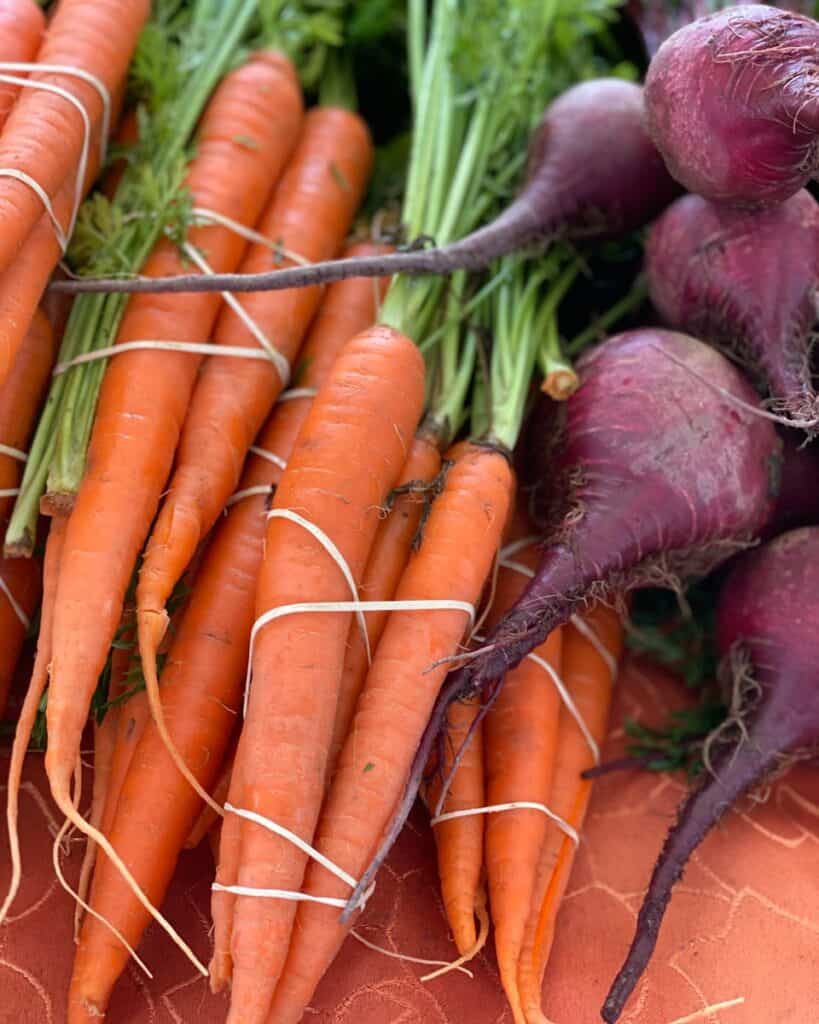
Root vegetables are at their peak during winter and offer a wealth of nutrition.
These vegetables store energy in their roots, allowing them to survive the cold, which in turn provides us with dense and concentrated nutrients.
- Carrots: High in beta-carotene, which converts to vitamin A, carrots support immune health and eye health. Try roasting them with a drizzle of olive oil and thyme for a side dish or pureeing them into a creamy soup.
- Beets: Rich in antioxidants and fiber, beets are a versatile winter ingredient. Roast them for salads, blend them into smoothies, or use them as a natural sweetener in baked goods.
- Turnips and Rutabagas: Often overlooked, these cruciferous root vegetables are low in calories but rich in fiber and vitamin C. Their mild, slightly peppery flavor pairs well with stews or roasted dishes.
- Sweet Potatoes: Packed with vitamins A and C, sweet potatoes are incredibly versatile. Roast them, add them to soups, or make a nutrient-dense mashed side dish.
How to Cook Root Vegetables in Winter Recipes
Roasting brings out their natural sweetness.
Cut them into uniform pieces, toss with olive oil and herbs, then roast at 400°F until tender.
These winter ingredients develop a caramelized flavor that enhances any dish.
These hearty vegetables bring warmth and substance to your winter meals, but balance is key.
To round out your plate, it’s smart to pair them with lighter, nutrient-rich greens that thrive in colder months.
2. Dark, Leafy Greens: Nutrient-Dense and Versatile
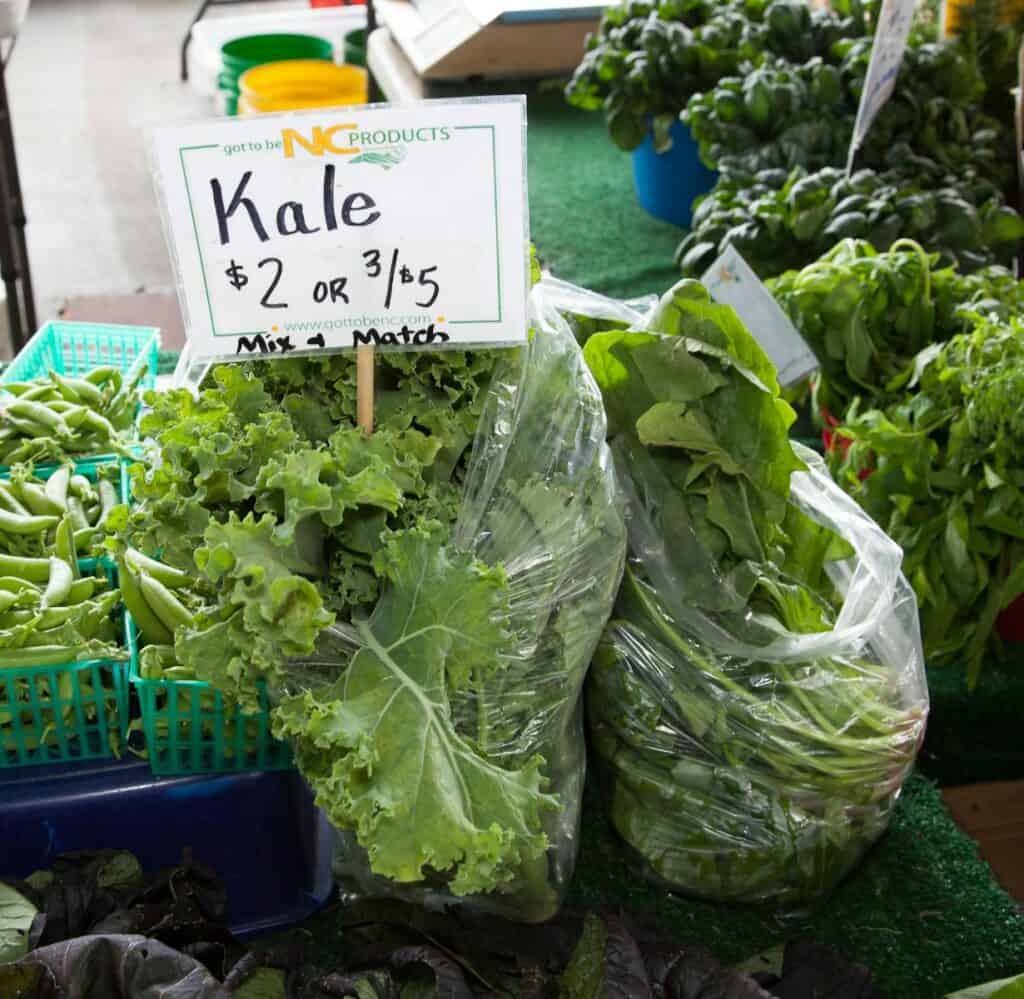
Dark, leafy greens like kale, collard greens, and Swiss chard are packed with vitamins A, C, and K, as well as minerals like calcium and iron, making them essential for winter health.
- Kale: This hardy green thrives in colder temperatures, becoming sweeter with frost. Use it in salads, soups, or even baked as crispy kale chips.
- Collard Greens: Known for their slightly bitter taste, collard greens are commonly used in stews and braised dishes. They’re a great source of fiber, helping with digestion.
- Swiss Chard: Swiss chard is known for its colorful stems and slightly earthy taste. Sauté with garlic and olive oil, or add to soups for an extra boost of nutrients.
Cooking Tips for Leafy Greens
Sautéing with olive oil and garlic is a simple method. Add a touch of lemon juice to balance their bitterness.
These winter ingredients cook quickly and complement almost any main dish.
While greens add lightness and vitamins to your plate, sometimes you need something richer to satisfy deeper cravings. T
hat’s where the comforting flavor and texture of winter squash come in.
3. Winter Squash: Heartwarming and Satisfying
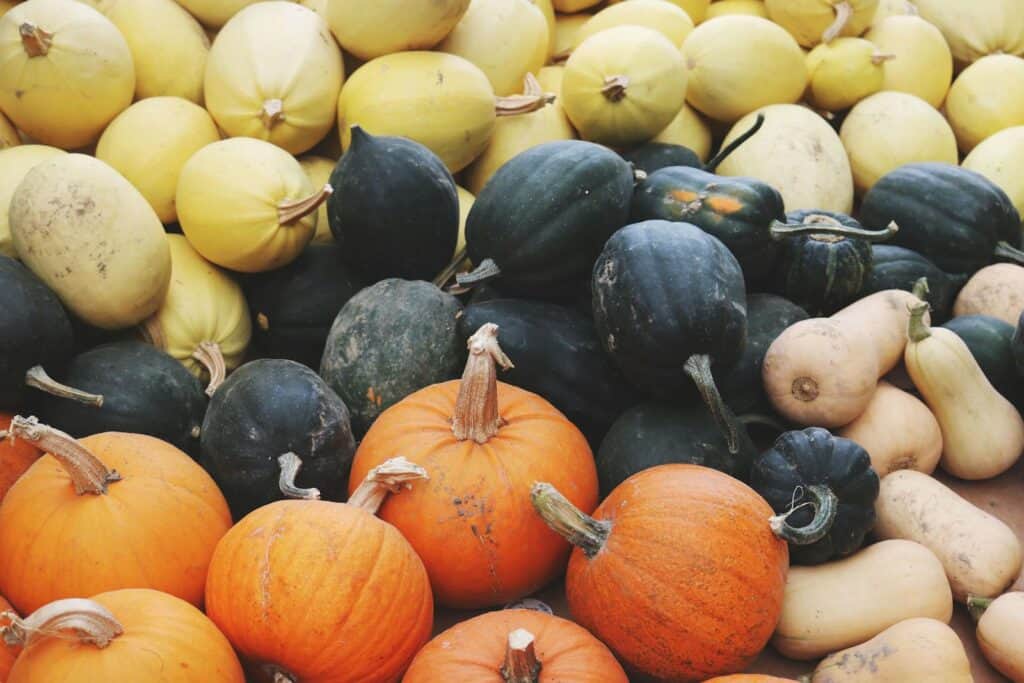
Winter squash varieties, such as butternut, acorn, and spaghetti squash, are perfect for adding natural sweetness and hearty texture to winter dishes.
These squashes are rich in fiber, potassium, and vitamins A and C.
- Butternut Squash: This sweet, nutty squash is excellent in soups, risottos, and even pasta sauces. Roasting enhances its natural sweetness, while pureeing creates a smooth texture perfect for creamy soups.
- Acorn Squash: With its mild, nutty flavor, acorn squash is ideal for roasting or stuffing. It’s a good source of dietary fiber and potassium, supporting heart health.
- Spaghetti Squash: Known for its unique stringy texture that resembles spaghetti, this low-calorie squash is a fantastic pasta alternative. Simply roast, scrape out the strands, and toss with sauce for a light, satisfying meal.
Cooking Tips for Winter Squash
Halve and roast squash cut-side down until fork-tender. You can also puree it into sauces, soups, or casseroles.
These winter ingredients add comforting flavor and bulk to your winter meal prep.
Winter squash helps build filling meals, but sometimes a touch of brightness can lift those heavier dishes.
That’s why citrus fruits are so valuable during this season they bring balance and zing to the table.
4. Citrus Fruits: Bright and Refreshing Winter Essentials
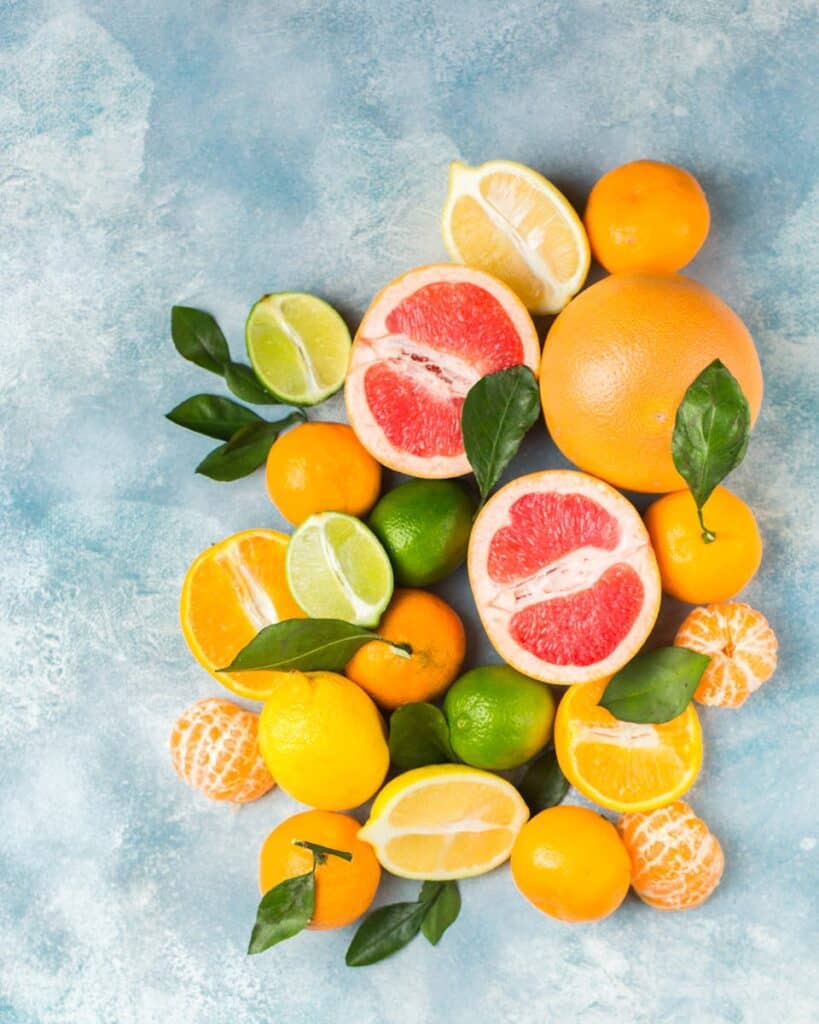
Citrus fruits like oranges, grapefruits, lemons, and limes are at their best in winter.
They’re bursting with vitamin C, which is essential for a healthy immune system, and their vibrant flavors can enhance both sweet and savory dishes.
- Oranges: Whether enjoyed on their own or used in recipes, oranges add a natural sweetness and tang. Use their zest to flavor dishes or squeeze the juice into dressings.
- Grapefruits: Known for their tart, refreshing flavor, grapefruits are excellent for balancing rich dishes. Add them to salads or serve with yogurt and honey for a nutritious breakfast.
- Lemons: Lemons are a versatile citrus fruit used to brighten the flavor of countless recipes. From vinaigrettes and marinades to desserts, lemon juice adds a fresh, tangy note.
- Limes: Similar to lemons, limes provide a refreshing acidity that can enhance Mexican and Asian dishes. Use the juice and zest in marinades, sauces, and dressings.
Cooking Tips for Citrus Fruits
Use zest for depth and fresh juice for acidity in vinaigrettes or sauces.
Citrus can elevate root vegetables, greens, or seafood—making it one of the most versatile winter ingredients.
Citrus brings freshness to your meals, but flavor isn’t just about acidity.
It’s also about depth, and for that, we turn to herbs and aromatics that bring complexity to even the simplest dish.
5. Pungent Herbs and Aromatics: Adding Depth and Warmth

During winter, herbs and aromatics become even more important as they add warmth and depth to dishes.
Fresh rosemary, sage, thyme, and garlic are essential for hearty winter meals.
- Rosemary and Thyme: These woody herbs pair beautifully with root vegetables, meats, and roasted dishes. Use them to infuse oils or sprinkle them over roasted vegetables.
- Sage: Known for its earthy flavor, sage complements winter squash, poultry, and sausage dishes. Add a few leaves to brown butter for a rich, nutty flavor that elevates pasta or roasted squash.
- Garlic and Ginger: Both garlic and ginger are powerhouse ingredients for winter cooking. Garlic adds a pungent depth, while ginger provides a warm spiciness. Together, they’re perfect for stir-fries, soups, and marinades.
Cooking Tips for Herbs and Aromatics
Add fresh herbs at the end of cooking for a burst of flavor, while dried herbs are best added earlier to allow their flavors to develop.
For garlic and ginger, finely mince them and sauté in oil before adding other ingredients to create a fragrant base for soups, sauces, and stews.
6. Hearty Grains and Legumes: Fueling Energy and Warmth
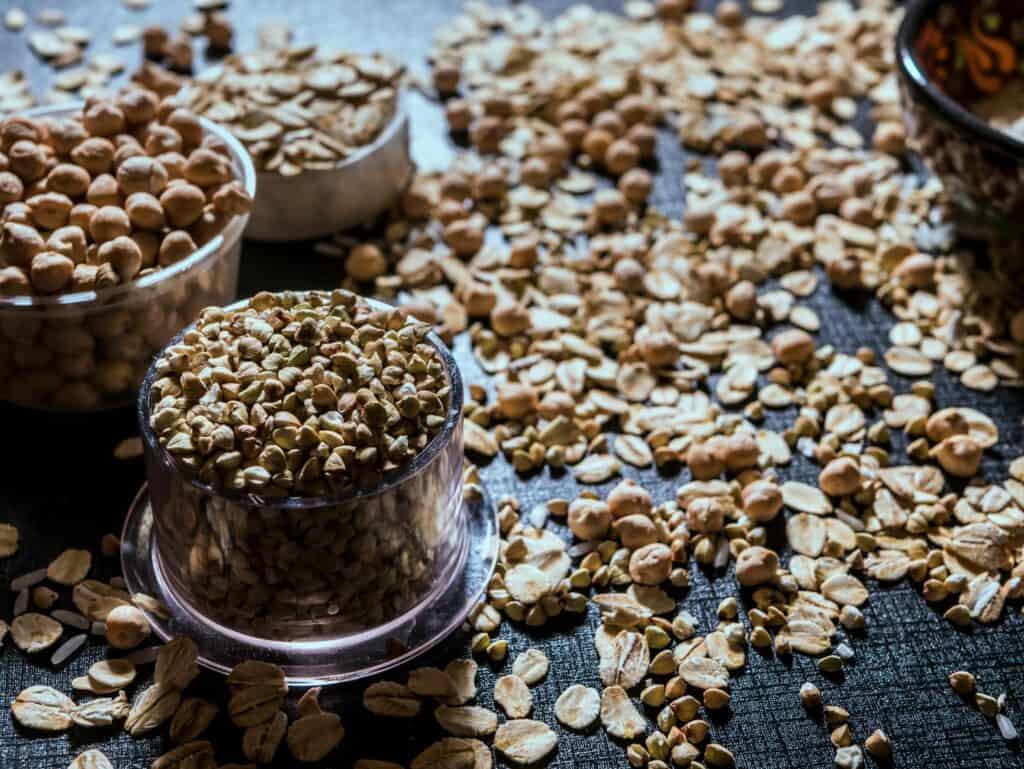
Winter is an ideal time to incorporate hearty grains and protein-rich legumes into meals for lasting energy and warmth.
- Barley: This ancient grain is a great source of fiber and adds a chewy texture to soups and stews. Try making a barley risotto or adding it to vegetable soup for a satisfying meal.
- Lentils: High in protein and fiber, lentils are a fantastic plant-based option. They cook quickly, making them ideal for soups, curries, and salads.
- Farro: Farro is an ancient grain with a nutty taste and chewy texture. Use it in grain bowls, soups, or as a side dish with roasted vegetables.
- Chickpeas: Versatile and high in protein, chickpeas can be added to stews, roasted as a crunchy snack, or pureed into hummus.
Cooking Tips for Grains and Legumes
Pre-soaking reduces cooking time.
Cook them separately from your soup base to control texture, then stir them in just before serving.
These winter ingredients ensure your meals are hearty and sustaining.
With all these ingredients at your fingertips, you can take your winter cooking even further.
The next step? Bringing it all together through smart meal planning and batch cooking that saves time and boosts flavor all week long.
Meal Planning and Batch Cooking with Winter Ingredients
Planning meals ahead can save time, reduce stress, and help you eat better all winter long.
With using winter ingredients in your weekly prep, you’ll always have something warm and healthy ready to go even on your busiest days.
Start by choosing a few core ingredients like sweet potatoes, lentils, and kale. Roast a big batch of root vegetables,
cook a pot of grains like barley or farro, and prep leafy greens by washing and chopping them in advance.
Cook once, eat several times. A roasted squash can become soup one day, a grain bowl topping the next, and a side dish later in the week.
Lentils work great in stews, salads, or wraps. Store your cooked ingredients in airtight containers in the fridge, and freeze extras when needed.
Label everything so you can grab and reheat meals without guessing.
Using winter ingredients this way keeps meals fresh, fast, and full of flavor.
Batch cooking also helps you cut back on food waste and grocery trips.
With a few hours of prep each week, you’ll spend less time cooking and more time enjoying cozy, nourishing meals.
Winter cooking doesn’t have to be hard, it just takes a smart plan.
FAQ: Winter Ingredients and Seasonal Cooking
1. What are the best winter ingredients for healthy meals?
Root vegetables, leafy greens, winter squash, citrus fruits, hearty grains, and aromatics are all excellent for creating balanced, flavorful winter dishes.
2. How can I cook winter ingredients without losing nutrients?
Use gentle methods like roasting, steaming, or sautéing. Avoid over-boiling, which can cause water-soluble vitamins to leach out.
3. Are root vegetables considered winter ingredients?
Yes, root vegetables like carrots, beets, and sweet potatoes are classic winter ingredients known for their nutrient density and warming qualities.
4. What grains are good for winter cooking?
Barley, farro, and lentils are perfect for soups and stews, while quinoa and chickpeas add plant-based protein to winter meals.
5. How do I store winter ingredients to keep them fresh?
Keep root vegetables in a cool, dark place; greens in the crisper drawer; squash at room temperature; and grains in airtight containers.
Takeaway: Make the Most of Your Winter Ingredients
Winter cooking doesn’t have to be complicated. With the right seasonal ingredients, you can make warm, healthy meals that taste great and keep you full.
Root vegetables, leafy greens, citrus fruits, and hearty grains all work together to create balance in your diet.
These ingredients are not only good for your body but also add flavor, color, and comfort to every dish.
As you plan your meals this season, think about how each ingredient can play a role. Roasted vegetables can be the base for many meals.
A splash of citrus can brighten up a heavy stew. Grains and legumes can turn a light dish into something more satisfying.
So instead of sticking to the same winter meals, try new ideas using what’s fresh and in season.
With a little planning and creativity, winter cooking can feel easy, rewarding, and full of flavor.
One hearty meal at a time.